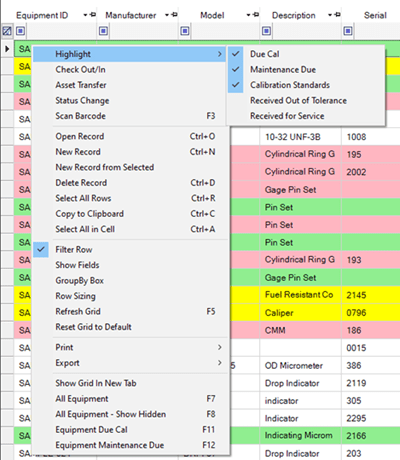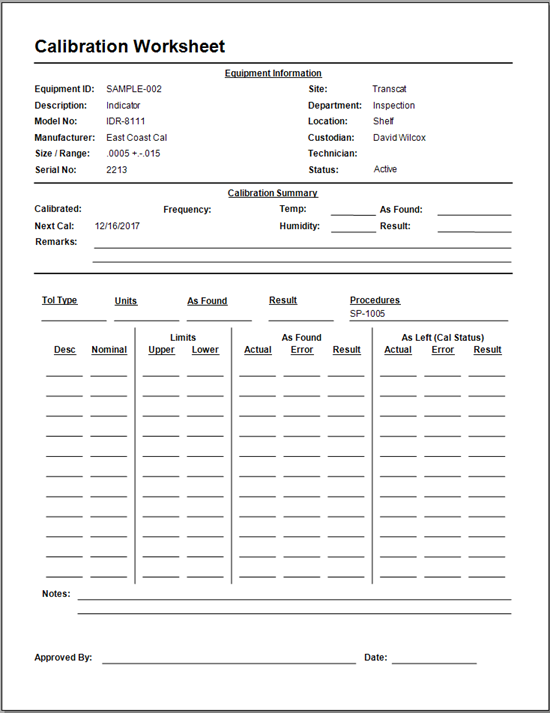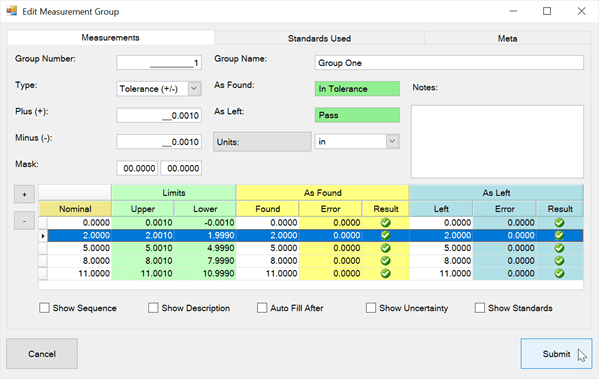Dial Test Indicator Calibration
Purpose
The purpose of this procedure is to provide general instructions for the calibration of dial test indicators.
Scope
All standard dial test indicators used to measure, gage, test, inspect and control part compliance to customer specifications and drawings.
Procedure
Preliminary Instructions and Notes
- Read this entire procedure before beginning the calibration.
- Calibration shall be performed in an environment that conforms to Manufacturer Specifications.
- The dial test indicator will hereafter be referred to as the Instrument Under Test (IUT).
- Verify that the IUT is clean.
- Visually examine the IUT for any condition that could cause errors in the calibration.
- An error in zero setting during calibration will be contained in every measurement and will increase in proportion to the distance from zero.
- If any of the requirements cannot be met, refer to the applicable manufacturer manual.
- If a malfunction occurs or a defect is observed while calibration is in progress, the calibration shall be discontinued and necessary corrective action taken; if corrective action affects a measurement function previously calibrated, the function shall be recalibrated before the remainder of the procedure implemented.
Reference Material
Applicable Manufacturers Manual or Brochures.
Specifications
The specifications of the IUT are determined by the applicable manufacturer's documentation. If the manufacturer's documentation is not available, then the specifications identified in this procedure are used.
Accuracy of all IUT's shall be within one dial graduation.
Repeatability of all IUT's shall be within 1/4 of one dial graduation.
Equipment Required
The Standards listed below should be selected on the basis of their higher accuracy level when compared to the unit under test. Equivalent Standards must be equal to or better than the Minimum-Use-Specification.
Minimum-Use-Specifications for Standards listed are 1/4 the accuracy required by the IUT.
Dial indicator checker with .0001" micrometer head, or equivalent.
Test indicator calibration arm.
Detailed Procedure
- Using index finger, depress the IUT contact point slowly and evenly over the full range, slowly allow the contact point to return to its starting position. The gage pointer shall move freely (without binding) and should return to the same starting position.
- Securely position the attachment arm onto the indicator checker. The IUT shall be mounted to the dovetail slot of the attachment arm to position the indicator contact point with respect to the micrometer spindle of the indicator checker.
- Position the micrometer thimble and test indicator to obtain zero readings. From this point, the gage pointer must travel the full indicator range, both clockwise and counterclockwise directions if unit is bi-directional.
- Divide the total indicator range into four equal parts to determine calibration checkpoints.
- Advance the spindle of the checker that represents the lowest value selected in step 4. Observe the location of the indicator pointer with respect to the dial graduations.
- Repeat all previous checkpoints in the opposite direction returning to zero.
- Repeat steps 5 and 6 a minimum of two additional times to determine IUT repeatability.
Gage Correction
Any gage exceeding specified tolerances per 3.4 at any time during calibration shall be repaired and recalibrated, returned as is for restricted use or scrapped.
All repair work shall be performed by a qualified individual.
Reason for Reissue
Revision A - First Release




